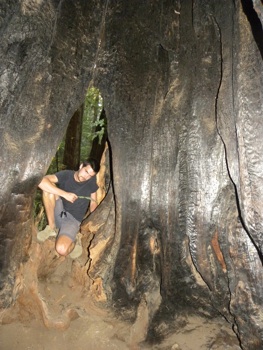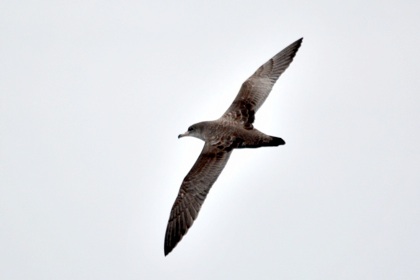marine organism-environment interaction
Chris Tyson is working towards his PhD in the Graduate Group in Ecology. Prior to joining the Nevitt lab, Chris obtained his MSc at the University of Amsterdam where he studied the foraging associations of Lesser Black-backed Gulls with fisheries in the North Sea. While working in this system, Chris focused on the extent of individual specialization on fisheries’ discards and the repercussions of this behavior. For his MSc, Chris also worked at the University of Oxford with the Oxford Navigation Lab. During this time, Chris studied the foraging ecology of Manx shearwaters breeding on Skomer Island, Wales.
Education
BS Biology & BA Philosophy; College of William and Mary (2012)
MSc Ecology & Evolution; University of Amsterdam (2014)
Research Interests
At a general level, I am interested in foraging ecology and the way that changes in trophic interactions can alter ecosystem services. Within this context, I am especially interested in the role that seabirds play and the implications of changing seabird abundances and community structure for ecosystem health. Many seabirds function as top-predators within marine ecosystems. Though this role is often cited as a conservation incentive, relatively little work has sought to quantify how changes to seabird communities will impact ecosystem functioning. As a general approach to this large-scale problem, I am interested in quantifying how specific functional traits of different seabird species relate to ecosystem effects (effect traits) and what traits of seabirds may respond to ecosystem changes (response traits). Conceptually, linking response and effect traits offers the exciting possibility to greatly increase our predictive ability about changes to ecosystem processes from changes in community average traits and vice versa. Such functional trait approaches have leant significant insights to how plant and insect communities function and how feedbacks within ecosystems may be generated. Within the vertebrate realm, however, such approaches are only beginning to be explored.
While I am still determining the precise course of my dissertation work, I would like to explore the merit of functional trait approaches for different procellariiform seabirds. To do so, one promising approach is to investigate changes in seabird abundances from at-sea surveys relative to simple environmental variables in order to see whether aside from species level responses, there are particular traits that are relevant for predicting changes in seabird abundances. I aim to pursue this question within the coming year.
About Chris Tyson
Stats
name CHRIS TYSON
GRADUATE GROUP ECOLOGY
RESEARCH SEABIRD FORAGING ECOLOGY, COMMUNITY ECOLOGY



